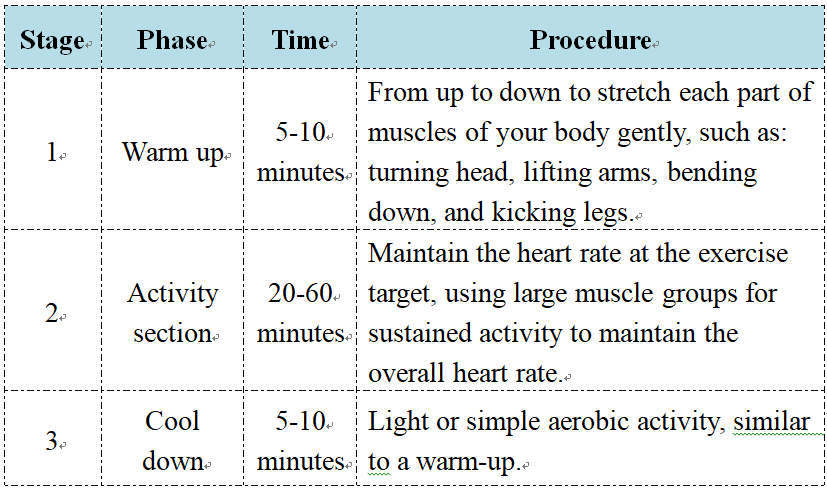【Learning Points】
- The benefits of exercise for diabetes patients include lowering blood sugar, controlling weight, protecting cardiovascular health, and enhancing mental well-being.
- Suitable exercises for diabetes patients include aerobic and resistance training.
- Exercise precautions for diabetes patients include avoiding exercising on an empty stomach, wearing appropriate exercise attire, carrying sugar cube, pausing exercise in case of discomfort, and monitoring blood sugar levels.
I.Introduction
Diabetes mellitus is one of the most challenging health problems. Although the development and management of diabetic care have evolved over the last decade, regular exercise, tight diet control, and medications with good compliance are still the three key factors for treating DM. Among these, regular exercise is the most cost-effective method to reduce weight.
II.What benefits can you get from regular exercise?
- Exercise can enhance insulin sensitivity and help to lower the blood sugar.
- Exercise eliminates excess fat, maintains standard body weight and improves insulin resistance.
- Exercise can maintain your blood vessel healthy and lower your blood pressure.
- Exercise can eliminate anxiety and relieve stress and therefore you will feel happy and relaxed easier.
III.How to do exercises?
Avoid short time and harsh activities, such as fast running, running upstairs, or lifting heavy weight. According to ADA’s recommendation, here are some ways you can follow:

IV.Ideal exercise suggestions:
- Patients with diabetes without comorbidities
- Regular exercise and avoiding sedentary lifestyle.
- At least 150 minutes of moderate intensity exercise per week, e.g. brisk walking.
- 2-3 times resistance exercises per week, one day between resistance exercises.
- Do not exercise for two days in a row.
- Younger or better physical fitness
75 minutes of high intensity vigorous exercise or high intensity interval exercise per week. e.g. squats, push-up, jump ropes, high kicks, etc. - Type 1 and Type 2 children, adolescents and pre-diabetics patients
60 minutes or more of moderate or vigorous aerobic exercise daily, e.g. stationary bicycle, walking in water, aerobic dance, or walking with legs raised, etc. - Older people with diabetes
Exercise that improves flexibility, balance and muscle endurance such as yoga or tai chi 2-3 times a week. In terms of exercise prescriptions, the frequency, intensity, type and duration of exercise should be considered according to the purpose.
V.Ways to exercise:
There are three stages of exercise:

VI.Attention when exercise:
- Avoid exercise before meal, especially after injection insulin or taking hypoglycemic agents.
- Chose proper activities, and soft and proper shoes, sport clothes, and cotton sucks.
- Do not exercise if your blood sugar is above 300mg/dl or below 70mg/dl before meals.
- If you experience illness (such as dizzy, trembling, cold sweating, or difficult breathing) during exercise, you should stop exercising immediately. You need to check your blood sugar and contact your doctor as soon as possible.
- Chose the less affected part to inject insulin at the day of exercise. For example, when your exercises are primary for arms and legs, you can inject insulin in the belly.
- It's better for you to get companied with your friends when exercising. Besides bring ID or diabetic passport with you, and the ways to control blood sugar, medication dosage, emergency hospital, urgent contact, and phone number.
VII.Conclusion
Proper exercise can improve your blood sugar and improve your health. If you are worried about how to start exercising, ask your doctor or diabetes health worker. Start exercising now and make it a healthy, happy part of your life.
VIII.References
- 王寧儀、周正亮(2019)‧運動即良藥‧臨床醫學月刊,83(2),92-99。https://doi-org.autorpa.ntunhs.edu.tw/10.6666/ClinMed.201902_83(2).0017
- 張桐瑋(2019)‧糖尿病前期與減重運動‧中華民國糖尿病衛教學會會訊,15(3),34-38。https://doiorg.autorpa.ntunhs.edu.tw/10.6583/TADE.201909_15(3).0008
- 黃映綺(2021)‧糖尿病的物理治療:該怎麼運動?‧彰基糖尿病友會刊,(15),16-19。https://www-airitilibrary.com.autorpa.ntunhs.edu.tw/Article/Detail?DocID=P20140804001-202112-202112220008-202112220008-16-19
簡易測驗
Let us take the quiz to make sure you understand
評語
統計結果不開放
請登入後才可以評分
未登入或權限不足!
- 位置
-
- 資料夾名稱
- English
- 上傳者
- 黃郁琇
- 單位
- 中榮護理衛教
- 英文名稱
- Exercise with diabetes
- 分類
- 三高
- 科別
- 英語
- 癌症照護
- 否
- 建立
- 2024-01-27 22:02:36
- 制訂日期
- 2018-08-01
- 最近修訂
- 2024-03-21 14:13:00